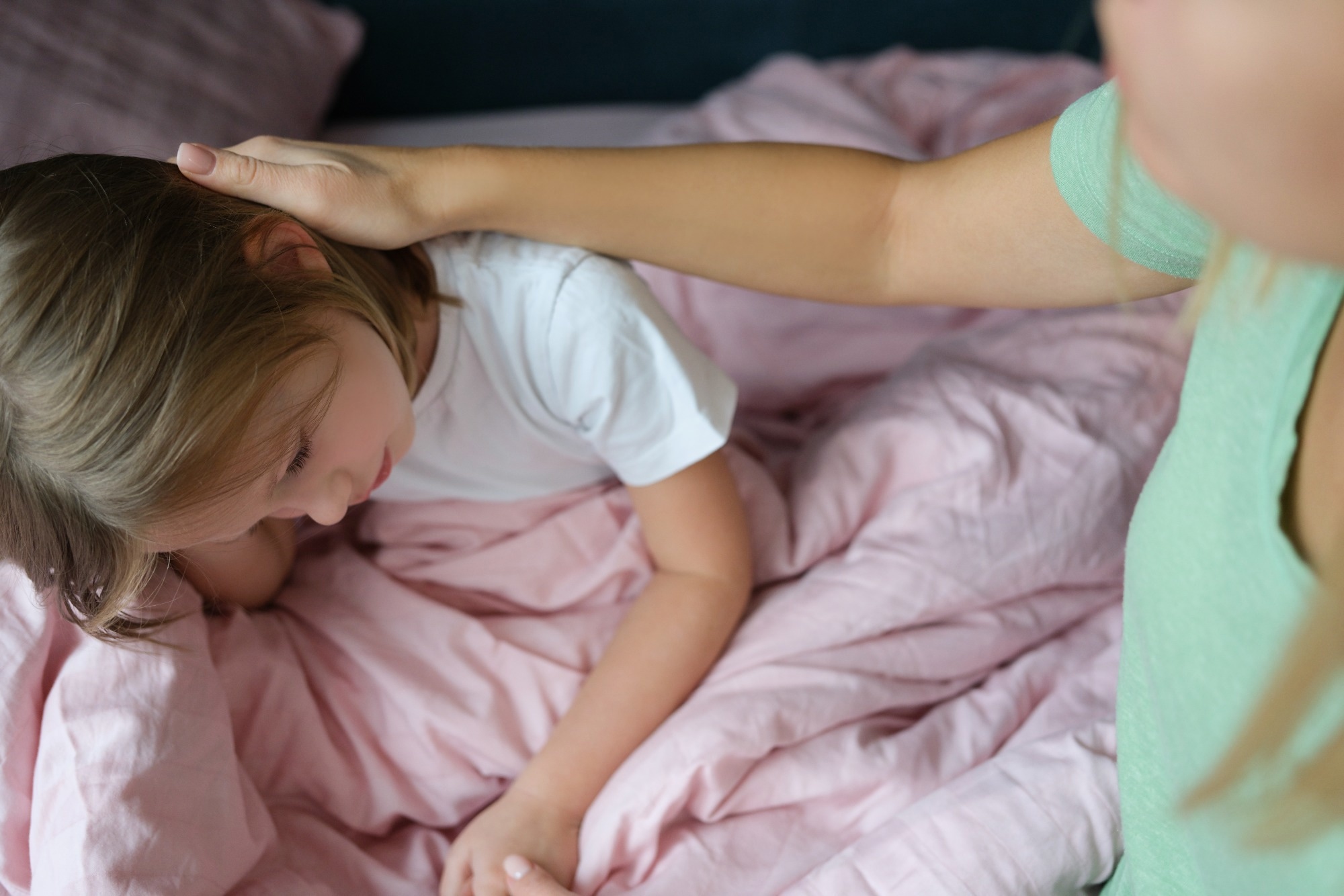In urban areas, people are constantly exposed to environmental noise, especially road traffic noise. Noise has been identified to be a significant contributor to public health problems. More than 100 million European citizens are exposed to an average daily noise level of at least 55 decibels (dB). The day–evening–night noise level (LDEN) is a European standard to express noise levels over an entire day. Similarly, LNIGHT is the noise indicator for the night. The World Health Organization (WHO) recommended reducing noise levels to 53 dB and 45 dB for LDEN and LNIGHT noise exposures, respectively.
A recent Environmental Research journal study investigated the association between environmental noise exposure and sleep in European preadolescents.
 Study: Outdoor residential noise exposure and sleep in preadolescents from two European birth cohorts. Image Credit: H_Ko / Shutterstock
Study: Outdoor residential noise exposure and sleep in preadolescents from two European birth cohorts. Image Credit: H_Ko / Shutterstock
Background
Sleep is essential for several vital biological functions, such as neural development and neuroplasticity. Many studies have revealed that these neural processes occur at an early phase of life through adolescence, thereby emphasizing how sleep is essential during these life stages.
Sleep disruptions have been associated with many short-term (e.g., increased stress responsivity, somatic problems, and behavioral problems) and long-term (e.g., metabolic syndrome, hypertension, cardiovascular diseases, and diabetes mellitus type 2) health problems.
Although previous studies have shown that environmental noise exposure causes higher sleep disturbances and leads to shorter sleep duration in adults, not much research is available on the impact of environmental noise on children's sleep. A previous study revealed that children between the ages of 7 and 14 exposed to higher outdoor nocturnal road traffic noise levels undergo sleep disturbance. This finding was based on self and parent-reported data on the quality of sleep. Nevertheless, many studies contradicted this report that showed that daily outdoor noise does not affect infants' or children's sleep.
Overall, the association between environmental noise from road traffic and sleep quality in children remained inconclusive. Few studies have used wrist actigraphy, which provides invaluable data on sleep disturbances.
About the Study
The current study analyzed the link between outdoor residential LDEN road traffic and multiple noise exposure based on maternal-reported sleep disturbances and physiological sleep measures in preadolescents. In this cross-sectional study, data were obtained from the Dutch Generation R Study and the Spanish INfancia y Medio Ambiente (INMA) Project, which included a multi-ethnic Europe-based cohort comprising pregnant women and their children.
Around 32% of preadolescents from the INMA-Sabadell cohort and approximately 20% of the Generation R Study had arousal problems. In both cohorts, the average sleep time was estimated to be between 7.2-7.5 hours with 85% sleep efficiency. Sleep onset latency and waking up from sleep were found to be weakly but positively correlated with factors that affect sleep. The average road traffic noise exposure levels were estimated to be 53.2 307 dB in the Generation R Study and 61.3 dB in the INMA-Sabadell cohort.
Study Findings
As per the self-reported data from mothers, no association existed between road traffic and multiple noise exposure and sleep disturbances. Nevertheless, actigraphy data revealed that more significant road traffic reduced sleep duration. Furthermore, road traffic and multiple noise exposure led to more prolonged wake-after-sleep onset in children living in the basement, ground, or first floor.
The finding of this research is consistent with some studies that suggested a possible association between road traffic noise exposure and sleep in children and preadolescents. However, disagreements with this effect were also observed, where no such association was observed.
The different results among studies could be because some individuals get habituated to noise. This happens when neurons adapt to repetitive auditory stimuli but respond to stimuli with varied physical properties. Also, some variations were observed among children sleeping alone in a room and those sleeping with their parents. Infants without siblings are accustomed to lower noise levels, making them more susceptible to nocturnal transportation noise, thereby leading to adverse health-related consequences. A previous study has indicated a robust association between socioeconomic status (SES) and sleep, i.e., children belonging to low SES experience shorter sleep duration and low sleep quality.
Strengths and Limitations
A key strength of this study is the large cohort size from two different European countries. In addition, while analyzing the association between outdoor road traffic noise exposure and sleep, the specific floor of the bedroom was considered. This inclusion helped in a more accurate analysis of noise estimations. Finally, necessary adjustments were made for confounding factors related to environmental noise exposure and sleep in preadolescents.
One of the limitations of the current study is its cross-sectional nature. Therefore, future longitudinal studies must be conducted to determine whether environmental noise exposure is linked with sleep during the different stages of sleep pattern development across childhood and adolescence. Another limitation is associated with actigraphy which estimates sleep patterns based on monitoring movements. Movements during restless sleep could be misinterpreted, biasing the estimation.